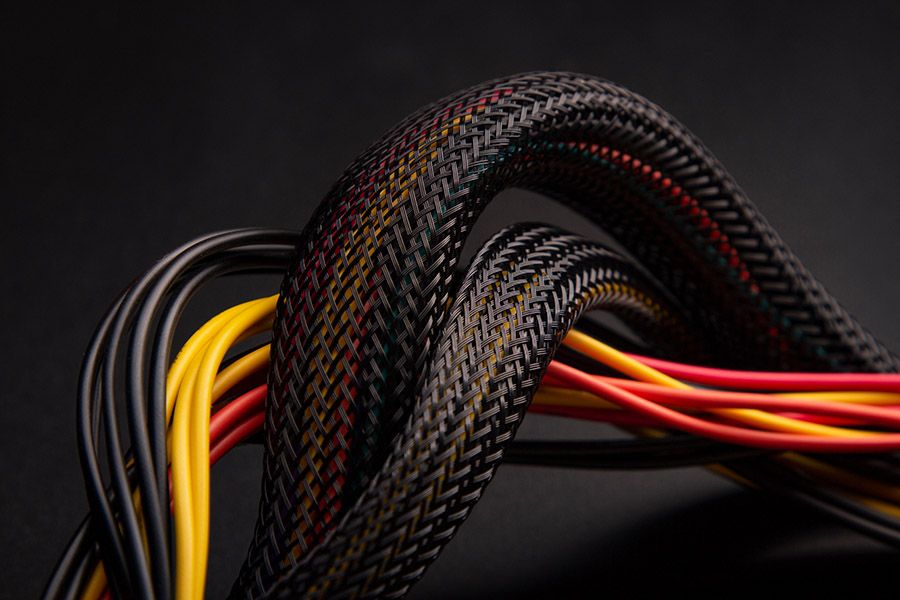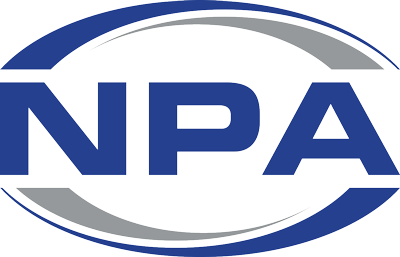
Cable sleeving, also known as cable management sleeves, are protective coverings that are used to organise and protect cables.
They are typically made from materials such as nylon or polyester, which provide excellent durability and protection against abrasion, heat, and chemicals.
Cable Sleeve Uses
Cable sleeving is used for a variety of purposes, but primarily for cable management. It is often used to bundle together cables and wires, keeping them organised and tangle-free.
This not only helps to prevent damage to the cables themselves but also makes it easier to identify and locate specific cables when needed.
Additionally, cable sleeving can help to improve the overall appearance of cable installations, creating a neater and more professional-looking environment.
Types of Cable Sleeving
There are several different types of cable sleeving available, each with its own unique features and benefits. Some of the most common types of cable sleeving include:
- Braided Cable Sleeving: Braided cable sleeving is made from woven fibers that create a tight, protective covering around the cables.
It is often used in high-temperature applications, as it provides excellent heat resistance and insulation.
Braided cable sleeving is also very flexible, making it ideal for applications where cables need to be bent or routed in tight spaces. - Heat Shrink Tubing: Heat shrink tubing is a type of cable sleeve that is made from a thermoplastic material.
When heated, the tubing shrinks to create a tight, protective covering around the cables.
Heat shrink tubing is often used to provide protection against moisture and dust, as well as to insulate cables from heat and cold.
- Split Tubing: Split tubing is a type of cable sleeve that is designed to be split down the middle, allowing cables to be easily inserted and removed.
Split tubing is often used in automotive and marine applications, where cables may need to be serviced or replaced frequently.
Braided cable sleeving, in particular, has become increasingly popular in recent years.
In addition to its protective qualities, braided cable is also highly customisable.
It is available in a wide range of colours and sizes, allowing it to be tailored to specific applications. Additionally, cable sleeving can be easily cut to length, making it ideal for custom cable installations.
In conclusion, cable sleeving is an essential component of any cable installation. It provides protection against damage, helps to organise and manage cables, and can even improve the overall appearance of cable installations.
With a variety of types and styles available, there is a cable sleeve that is suitable for virtually any application.
Factors to Consider When Purchasing Cable Sleeving
When purchasing cable sleeving, there are several factors that a buyer should take into account. The main goal is to ensure that you are selecting the right product for your specific application.
Some of the most important factors to consider include:
- Cable Diameter: The cable sleeving should be chosen based on the diameter of the cables that will be enclosed. Choosing a sleeve that is too small may not provide enough protection, while choosing a sleeve that is too large may not provide a secure fit.
- Material: The material of the cable sleeving should be chosen based on the environmental factors of the application. For example, if the cables will be exposed to high temperatures, a braided sleeve made from a heat-resistant material like fiberglass or ceramic may be more appropriate.
- Flexibility: The flexibility of the cable sleeving is an important consideration if the cables will be routed through tight spaces or around corners. A more flexible sleeve will allow for easier installation and reduce the risk of kinking or damage to the cables.
- Length: cable sleeving is often sold in pre-cut lengths, so it is important to choose a sleeve that is long enough to cover the entire length of the cables that need to be protected.
- Colour: Cable sleeving is available in a variety of colours. The most popular colours include black, blue, natural and red.
- Flame Rating: Depending on the application, it may be necessary to choose a cable sleeving with a specific flame rating to comply with safety regulations.
- Durability: The durability of the cable sleeving is an important consideration, especially if the cables will be exposed to harsh environmental factors or frequent movement.
- Cost: Finally, the cost of the cable sleeving should be taken into account. While it may be tempting to choose the cheapest option, it is important to balance cost with the quality and suitability of the product for the specific application.
To find out more about cable sleeving, phone NPA today on (08) 8268 2733 or browse our online store here to see our extensive range of cable sleeving.
View other products in the NPA Buyer’s Guide Series below

